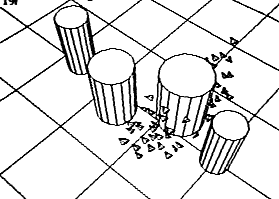Dr Simon Scarle, previously a Microsoft Rare Studio Software Engineer, who is now a researcher at Warwick University's WMG Digital Laboratory, used one of the XBox 360's GPUs to carry out research on how electrical signals around the heart moved around damaged cardiac cells.

Sony's PS3 has made the use of parallel computing from the very date of its release, with Stanford University's Folding@Home project, and has software development kits (SDK) for harnessing the parallel processing capability of the console.
On a previous post, I mentioned how the PS3's parallel computing capability has also been used to create a flocking simulation. It would be interesting to see if such simulations are, created on the X360, and to see if Microsoft will consider releasing an SDK to attract researchers and developers to use its console for this purpose.
It would certainly be a cost saving way of carrying out research that requires parallel computations, rather than the traditional use of clustered PCs or setting up a network of PCs.

